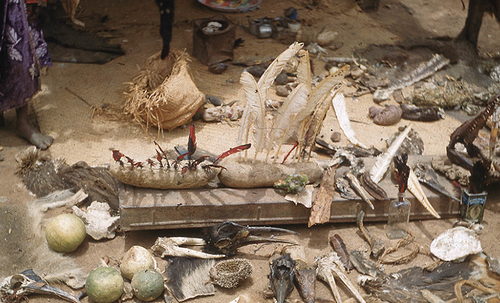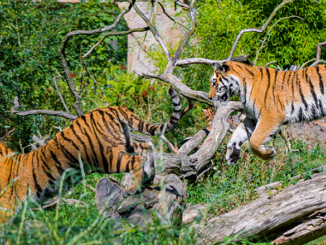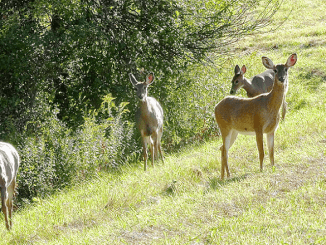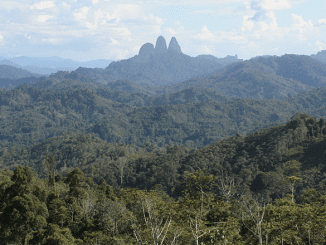
WASHINGTON, DC, October 4, 2021 (ENS) – The budding Coalition to End Wildlife Trafficking Online, with 47 member companies across the tech sector, issued its second progress report on Tuesday – collectively they have blocked more than 11.6 million transactions for endangered wildlife online.
The blocked listings advertised live tigers, reptiles, primates and birds for the exotic pet trade, amd products derived from species like elephants, pangolins and marine turtles.
The Coalition was convened in 2018 by three conservation organizations – WWF, a Swiss foundation with a network active in 100+ countries; TRAFFIC, the UK-based wildlife trade monitoring network; and the US-based International Fund for Animal Welfare, IFAW.
Working across the technology and conservation sectors, the Coalition is creating consistency in policies and monitoring across the Internet, which provides a largely unregulated space for wildlife traffickers to identify interested buyers and start transactions.
Since launching with 21 member companies, the Coalition has more than doubled in size and now includes operations across Africa, Asia, Europe, and the Americas.
Alibaba, eBay, Etsy, Facebook, Google, Instagram, Microsoft, and Pintrest are all members of the Coalition. Many Chinese tech companies such as Baidu are members, but not WeChat, the largest.
One of the newer Coalition members is the social media platform TikTok, which joined last March and has since introduced new wildlife policies, increased enforcement efforts, and developed public service announcements to educate users on how to help keep endangered species #OfflineAndInTheWild.
“Partnering with social media platforms is critical to have an impact in reducing wildlife trafficking online,” Giavanna Grein, senior program officer with TRAFFIC said.
We are grateful to TikTok for taking this issue seriously and stepping up to ensure there is no home for wildlife trafficking on their platform,” she said.
Online wildlife trafficking is driven by consumer demand for elephant ivory, rhino horn and big cat skins, as well as for live pets, which the Coalition says is partly fueled by the promotion of exotic pet ownership and interactions on social media.
“Illegal wildlife trade, both online and in physical markets, is decimating populations of wild species and is a contributor to the catastrophic biodiversity loss seen globally,” the Coalition said in a statement accompanying the release of its new report.
Coalition’s 2021 Progress Report By the Numbers
Company user communications received 1,088,679,149 impressions and engagements on social media, helping users become aware of the threats to endangered species, understand what is prohibited on company platforms and report suspicious content.
Through the Coalition’s e-learning program, OWLET, and in-person training sessions, 2,376 company staff have received training to detect illegal wildlife on their platforms.
More than 11,000 listings for illegal wildlife have been reported to company members through the Coalition’s citizen science Cyber Spotter program.
The Coalition has developed a key search words database with over 2,500 known search terms in multiple languages used to avoid detection online that is shared regularly with companies to enhance automation.
Since the release of the Coalition’s 2020 progress report 18 months ago, Coalition companies have removed an additional 8.3 million listings for prohibited wildlife, says Crawford Allan, who works with both WWF and TRAFFIC.

WWF-TRAFFIC webinar “Joining Forces to Stop Illegal Wildlife Trafficking Online” to educate the public about online wildlife exploitation. July 2020 (Screengrab from webinar courtesy WWF)
An international expert on wildlife trafficking and trade, with 25 years in wildlife conservation, policy and regulation, Allan is the recipient of a $5 million Google Global Impact Award Grant, and is a former member of the Advisory Council to the U.S. Presidential Task Force on Wildlife Trafficking.
Allan has led TRAFFIC’s black market investigations in dozens of countries and has supported strong enforcement action and some of the largest seizures, major arrests and prosecutions internationally.
He says the fact that Coalition members could block millions of listings is due to two factors – the increased availability of wildlife online a nd the response by tech companies to address this threat, including enhanced automated detection systems.
Allan says that even through blocking more than 11.6 million transactions for endangered wildlife online is helpful, much more wildlife trafficking is still going on.
“Overall, it is a fraction of prohibited wildlife that’s out there, but we will continue to scale our impact even further with determined efforts by more companies globally,” he said.
“Wildlife trade is big business,” Allan says, “it needs big innovative solutions to make sure that it does not threaten species and undermine the livelihoods of the poorest communities.”
Coalition member companies have strengthened their wildlife policies, increased staff ability to detect potential illegal wildlife products and live animals, taken action on suspicious listings reported by wildlife experts and volunteers in the Coalition’s Wildlife Cyber Spotter Program, enhanced algorithms through provided search words, created reporting pathways and pop-up alerts to empower users to report suspicious content and sharing best practices with one another.
Lionel Hachemin, Wildlife Campaigner at IFAW, said, “The volunteers that are trained as part of the Coalition’s Cyber Spotter Program are our extra set of eyes on the web. They are provided with information on priority species, such as elephants, birds, and reptiles, and whenever they suspect a violation, they report it to us, after which we share it with the related platforms for further action.”
Platform users can help keep endangered species #OfflineandIntheWild by reviewing the Coalition’s Prohibited Wildlife Policy framework to understand which species shouldn’t be traded and reporting listings directly on company platforms or through the Coalition’s online reporting page.
Europe Has Its Own Online Wildlife Trafficking Ban
The Coalition is not the only effort to block trafficking in endangered wildlife online. In the September 2021 issue of “Horizon,” the European Union’s journal, Kathy Tzilivakis writes about the European Union’s WILDLIFE trade project, funded by a 1.5 million euro grant that runs through 2024.

“While the move towards online platforms started several years before the Covid-19 pandemic, the restrictions imposed to contain the virus accelerated this digital transformation,” Tzilivakis writes.
“Gaining access to a vast international marketplace and following the same routes as other crimes such as drugs and weapons smuggling, wildlife trafficking is rising 5% to 7% annually, two to three times faster than the global economy,” she writes.
“The information available to investigate the illegal trade in wildlife is often incomplete or missing. As such, we can’t get the full picture,” said Enrico Di Minin, associate professor of conservation geography at the University of Helsinki in Finland where he leads the Helsinki Lab of Interdisciplinary Conservation Science. “Since 2015, when the illegal trade in wildlife began moving increasingly onto digital markets, I began investigating the wildlife trade from digital platforms.”
This is how the concept for the WILDTRADE project came about – to quantify the global patterns and trends of the illegal wildlife trade and to investigate how market forces shape them.
WILDTRADE will use big data mined from social media platforms in combination with machine learning methods and data gathered from online surveys and literature reviews to identify what species and wildlife products are traded online and what are the motives behind the trade to identify the global hotspots and marketplaces.
Featured image: A tiger died with its paw caught in a trap at the Tadoba Andhari Tiger Reserve, a wildlife sanctuary in Chandrapur district of India’s Maharashtra state. 2016 (Photo courtesy Wildlife Trust of India)
© 2021, Environment News Service. All rights reserved. Content may be quoted only with proper attribution and a direct link to the original article. Full reproduction is prohibited.



